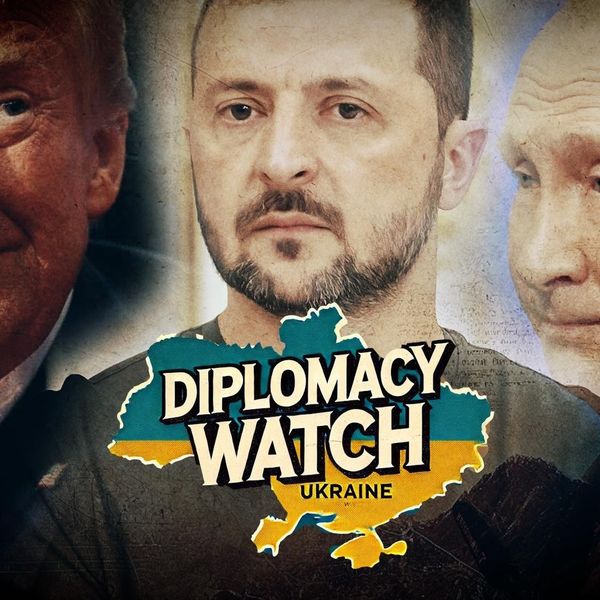As word of South Korean President Yoon Suk Yeol’s surprise declaration of martial law spread across Washington, the message from the outgoing administration was surprising but clear. Despite “grave concerns” about the political turmoil, “our alliance with the ROK [or Republic of Korea] is ironclad,” said Deputy Undersecretary of State Kurt Campbell.
As other Biden acolytes repeated the refrain, any serious public discussion of the implications of Yoon’s move for the U.S.-South Korea alliance were largely brushed aside.
That is a mistake. The ongoing political upheaval in a country that the Biden administration positioned in the heart of its Indo-Pacific strategy and that the United States is committed to defend should trigger alarm bells in Washington. Not only does the incident raise questions about the health of the alliance, but it also suggests that the potential for U.S. military entanglement on the Korean Peninsula may be higher than previously assessed. The incoming administration should critically reevaluate the benefits and risks of the U.S.-South Korea relationship and recalibrate accordingly.
Even among the vast portfolio of security guarantees the United States has on its books, the U.S.-South Korea alliance stands out. No less than 28,500 U.S. military personnel permanently based in South Korea, with others rotating through. The 1953 mutual defense treaty commits the United States to support South Korea in the event of an attack, and the two countries share a combined command that integrates their forces and is led by a U.S. four-star general with a South Korean deputy. The bilateral relationship is thus based on a high level of trust and presumes constant communication.
Yoon’s abuse of power and subsequent impeachment raise questions about the U.S.-South Korea relationship on three levels. First, there is new uncertainty about the benefits of the alliance for the United States. Over the past four years, the Biden administration leaned hard into the relationship with South Korea, viewing the strategically positioned and militarily capable country as a valuable chess piece in its efforts to balance Chinese power. Biden also cast South Korea as a member of his global coalition of democracies.
Both roles have now been placed in doubt. South Korea’s position as a leading liberal democracy has been irreparably damaged. Although the declaration of martial law was met with massive popular protests and failed under pressure from the country’s lawmakers, the events before and after are a reminder of the country’s authoritarian past and just how fragile its democracy remains.
South Korea’s continued role as a counterweight to China also seems tenuous. Yoon’s likely successor, Lee Jae-myung, has already indicated that he wants a more constructive relationship with China. While the extent of any rapprochement remains to be determined, a shift by Seoul toward Beijing could compromise U.S. military and economic plans in Asia. For instance, a less hawkish Lee might restrict U.S. military contingency access to bases in South Korea during a regional conflict, turn back the clock on the nascent U.S.-led trilateral cooperation with Japan, or resist U.S. pressure to cooperate with export controls and trade restrictions aimed at China. Going forward, South Korea’s strategic value to the United States could be much diminished.
Second, the events surrounding Yoon’s martial law declaration challenge the Biden administration’s narrative that the U.S.-South Korea alliance is “stronger than ever” and raise troubling concerns about its readiness to “fight tonight,” as promised by the South Korea-based U.S. Eighth Army. The Biden administration invested heavily in alliance coordination with South Korea, with frequent high-level visits, combined military drills, and new mechanisms for information sharing and integration, such as the Washington Declaration’s “enhanced dialogue” around nuclear issues.
Despite these efforts, Yoon did not notify the White House before his political maneuver, nor did his defense chief warn his counterpart in the Pentagon. U.S. Forces Korea and the Combined Forces Command were also left in the dark, even as South Korean military forces were sent to block lawmakers from entering the National Assembly building.
This complete breakdown in communication suggests both a lack of transparency and serious alliance management issues. Had North Korea taken advantage of the political unrest, the U.S. general at the helm of Combined Forces Command would have found some portion of South Korean personnel under his operational command unexpectedly already deployed elsewhere. It is not clear that the United States and South Korea are primed to work in lockstep during peacetime, let alone operate together under the pressure of a crisis. The consequences of this breach of trust are far-reaching; not just U.S. policymakers, but also adversaries, now have reason to be skeptical of the alliance’s readiness and effectiveness in war.
Finally, Yoon’s rash move and the apparent complicity of his defense chief, who subsequently attempted suicide, may arouse new worries about Seoul’s reliability as a military ally and the risks the Korea alliance poses to the United States. Although U.S. forces have no role in South Korea’s internal security, the unrest following the martial law declaration still left them vulnerable. Worse, U.S. policymakers must now grapple with fears about an imprudent ally dragging the United States into major war.
This risk is not far-fetched. There are reports that in October 2024, South Korea’s defense chief sent drones over North Korean territory hoping to provoke a response from Pyongyang that would give cover for Yoon’s martial law announcement. But a North Korean response also could have triggered the U.S.-South Korea mutual defense commitment and almost certainly would have placed U.S. forces in harm’s way.
U.S. officials may now be wondering whether ongoing political machinations in South Korea disguise future threats of entanglement — or entrapment — for the United States.
During his first term, President-elect Donald Trump was critical of the U.S.-South Korea relationship, but his concerns were centered on burden-sharing. As he returns to the White House, Trump and his foreign policy team should ask a more fundamental question: Given changed political and military realities after the martial law declaration, does the alliance still serve American interests?
Though the events of the past month likely do not warrant an immediate termination of the U.S.- South Korea alliance, there is certainly justification for a recalibration to protect U.S. interests and preserve military assets. With more uncertain strategic benefits, lower than expected readiness, and substantially higher risks, the U.S. alliance commitment should also be scaled back.
The incoming administration has several options. It might adopt new safeguards, including additional crisis communication mechanisms, or apply limitations and conditions to the terms of the mutual defense agreement effectively limiting U.S. obligations. It could reduce the number of soldiers and systems permanently based in South Korea to decrease U.S. exposure to events on the Peninsula or harden existing base infrastructure to better protect U.S. personnel based there.
Finally, Trump might simply decide to invest less in the alliance, matching lower outlays with the lower expected returns. This might mean holding fewer consultations and military exercises and pausing efforts to deepen operational, logistical, and industrial integration.
Critics will argue that any pullback from South Korea will damage U.S. credibility and encourage opportunistic aggression from adversaries. But U.S. alliances are not sacrosanct; all should be treated as means to an end. Given recent events in Seoul, it would be strategically foolish for Washington to proceed with South Korea as if nothing has changed.
- Escaping the 'security dilemma' on the Korean Peninsula ›
- Competing 'nationalisms' led to shocking showdown in Seoul ›















